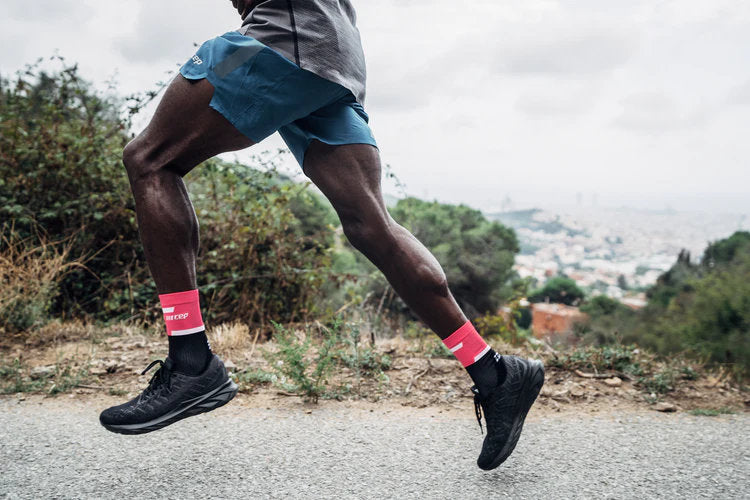
Maximizing Performance and Recovery: The Surprising Benefits of Wearing Compression Socks While Exercising
In the world of fitness and athletic performance, athletes and exercise enthusiasts are constantly seeking ways to enhance their performance, improve recovery, and prevent injuries. One often overlooked yet highly effective method is the use of compression socks. These specialized garments, designed to provide graduated pressure to the legs, have gained significant popularity in recent years. In this blog, we will explore the numerous benefits of wearing compression socks while exercising and delve into the science behind their effectiveness.
Understanding Compression Socks
Before we dive into the benefits, it is essential to understand what compression socks are and how they work. Compression socks are elastic garments that are worn on the lower legs, from the foot to the knee or thigh, and exert graduated pressure on the muscles and blood vessels. They are typically made of stretchy materials that apply the most pressure at the ankle and gradually decrease as they move up the leg.
Enhanced Performance
-
Increased Blood Circulation: Compression socks improve blood flow by promoting venous return, which is the movement of blood from the extremities back to the heart. By applying pressure on the legs, these socks help squeeze the veins and enhance the efficiency of blood circulation. This increased blood flow delivers more oxygen and nutrients to the muscles, resulting in improved performance and endurance.
-
Reduced Muscle Fatigue: During exercise, muscles generate waste products like lactic acid, which can lead to muscle fatigue. Compression socks aid in the removal of these waste products by accelerating the flow of deoxygenated blood and lymphatic fluids. By reducing muscle fatigue, athletes can exercise longer and push themselves harder, ultimately leading to improved performance.
-
Enhanced Muscle Stability: Compression socks provide gentle support and stabilization to the muscles and surrounding tissues. This added stability reduces muscle oscillation and vibration, thereby minimizing the risk of muscle damage and fatigue. With improved muscle stability, athletes can maintain better form and technique, leading to enhanced performance.
Improved Recovery
-
Enhanced Muscle Recovery: Intense exercise can cause muscle micro-tears and inflammation, leading to delayed-onset muscle soreness (DOMS). Compression socks assist in reducing the duration and severity of DOMS by aiding in the removal of metabolic waste products and promoting faster muscle recovery. The increased blood circulation also supplies the muscles with the necessary nutrients and oxygen, expediting the healing process.
-
Decreased Swelling and Edema: Prolonged exercise or high-impact activities can lead to swelling and edema in the lower extremities. Compression socks exert external pressure, which helps prevent fluid accumulation and reduces swelling. By facilitating efficient fluid exchange in the tissues, these socks aid in preventing edema and promote faster recovery.
-
Alleviation of Muscle Cramps: Compression socks can alleviate muscle cramps, particularly in the calves. The gentle pressure applied by the socks enhances blood flow, which ensures adequate oxygen and nutrients reach the muscles. This improved circulation helps prevent muscle cramps and can significantly enhance an athlete's overall performance and comfort.
Injury Prevention
-
Reduced Risk of Deep Vein Thrombosis (DVT): Deep vein thrombosis is a potentially life-threatening condition that occurs when blood clots form in deep veins, often in the legs. Compression socks help prevent DVT by promoting blood flow and preventing blood from pooling or clotting in the veins. This is especially important during long periods of inactivity, such as prolonged flights or extended periods of sitting.
-
Lowered Risk of Shin Splints: Shin splints, a common overuse injury characterized by pain along the shinbone, can be debilitating for athletes. Compression socks provide targeted compression to the muscles and tissues in the lower leg, reducing excessive vibration and stress on the shinbone. This reduces the risk of developing shin splints and aids in their recovery.
-
Ankle Support and Stability: Compression socks offer additional support and stability to the ankle joint, reducing the risk of sprains and twists. The compression around the ankle helps stabilize the ligaments and tendons, providing athletes with increased confidence during explosive movements or sudden changes in direction.
Incorporating compression socks into your exercise routine can have a significant impact on performance, recovery, and injury prevention. From increased blood circulation and reduced muscle fatigue to enhanced recovery and injury prevention, the benefits of wearing compression socks are vast. Whether you're an elite athlete or a casual fitness enthusiast, consider adding compression socks to your workout gear for improved performance and overall well-being. Always consult with a healthcare professional or sports medicine expert to determine the appropriate compression level and fit for your specific needs. Embrace the power of compression socks and unlock your full potential in every workout session.



